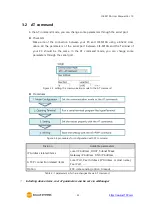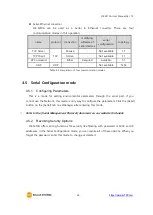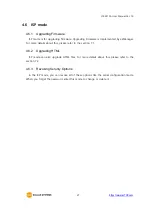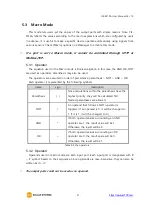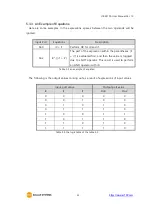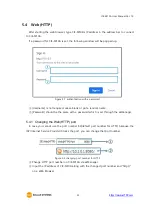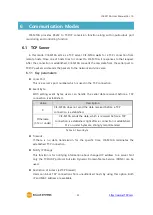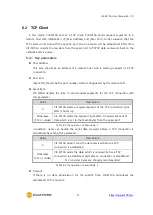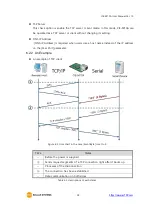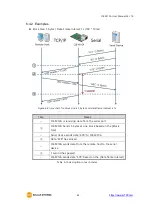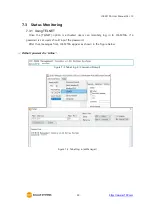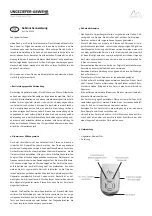
CIE-M10A User Manual Ver. 1.0
- 35 -
6
Communication Modes
CIE-M10A provides RS232 to TCP/IP conversion function along with input/output port
monitoring and controlling function.
6.1
TCP Server
In this mode, CIE-M10A acts as a TCP server. CIE-M10A waits for a TCP connection from
remote hosts. Once one of hosts tries to connect to CIE-M10A, it responses to that request.
After the connection is established, CIE-M10A converts the raw data from the serial port to
TCP/IP packets and sends the packets to the network and vice versa.
6.1.1 Key parameters
⚫
Local Port
This is a server
’
s port number which is used in the TCP connection.
⚫
Event Byte
With setting event bytes, users can handle the serial data received before a TCP
connection is established.
Value
Description
0
CIE-M10A does not send the data received before a TCP
connection is established.
Otherwise
(512 or under)
CIE-M10A sends the data, which is received before a TCP
connection is established, right after a connection is established.
512 or under bytes are strongly recommended.
Table 6-1 Event Byte
⚫
Timeout
If there is no data transmission for the specific time, CIE-M10A terminates the
established TCP connection.
⚫
Notify IP Change
This function is for notifying information about changed IP address to a server. Not
only the TCP/UDP protocol but also Dynamic Domain Name Service (DDNS) can be
used.
⚫
Restriction of Access (ezTCP Firewall)
Users can block TCP connections from unauthorized hosts by using this option. Both
IP and MAC address are available.



